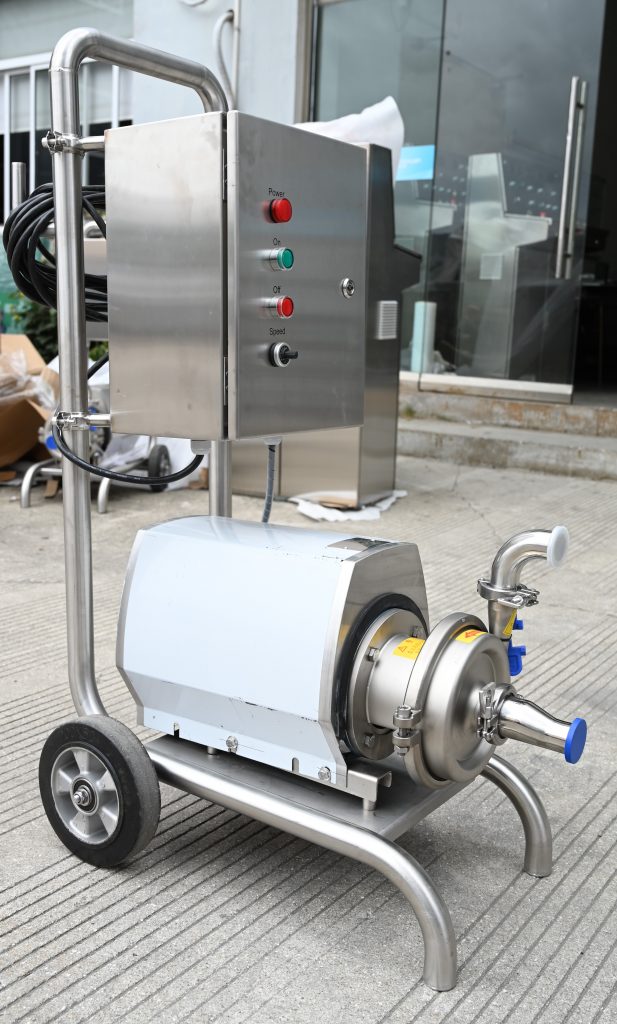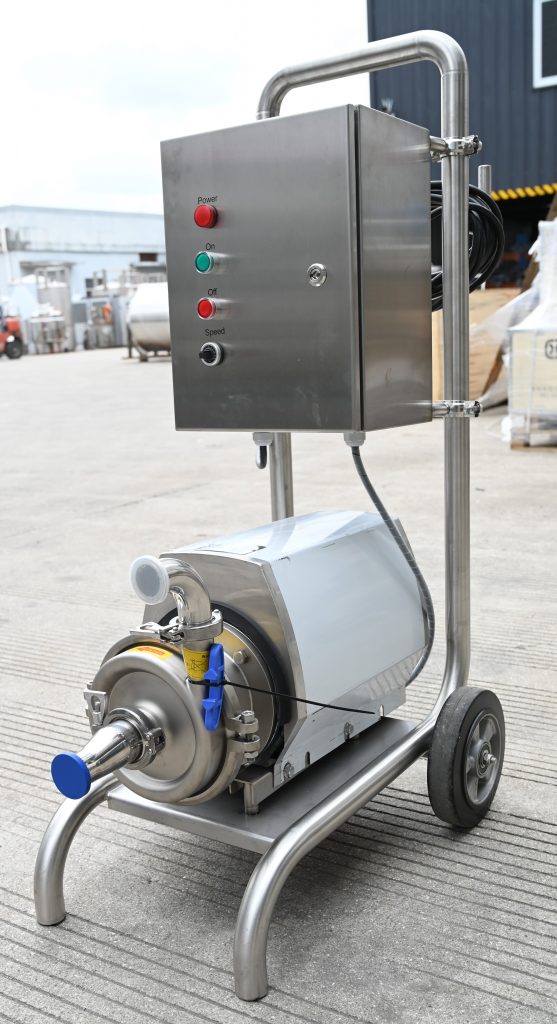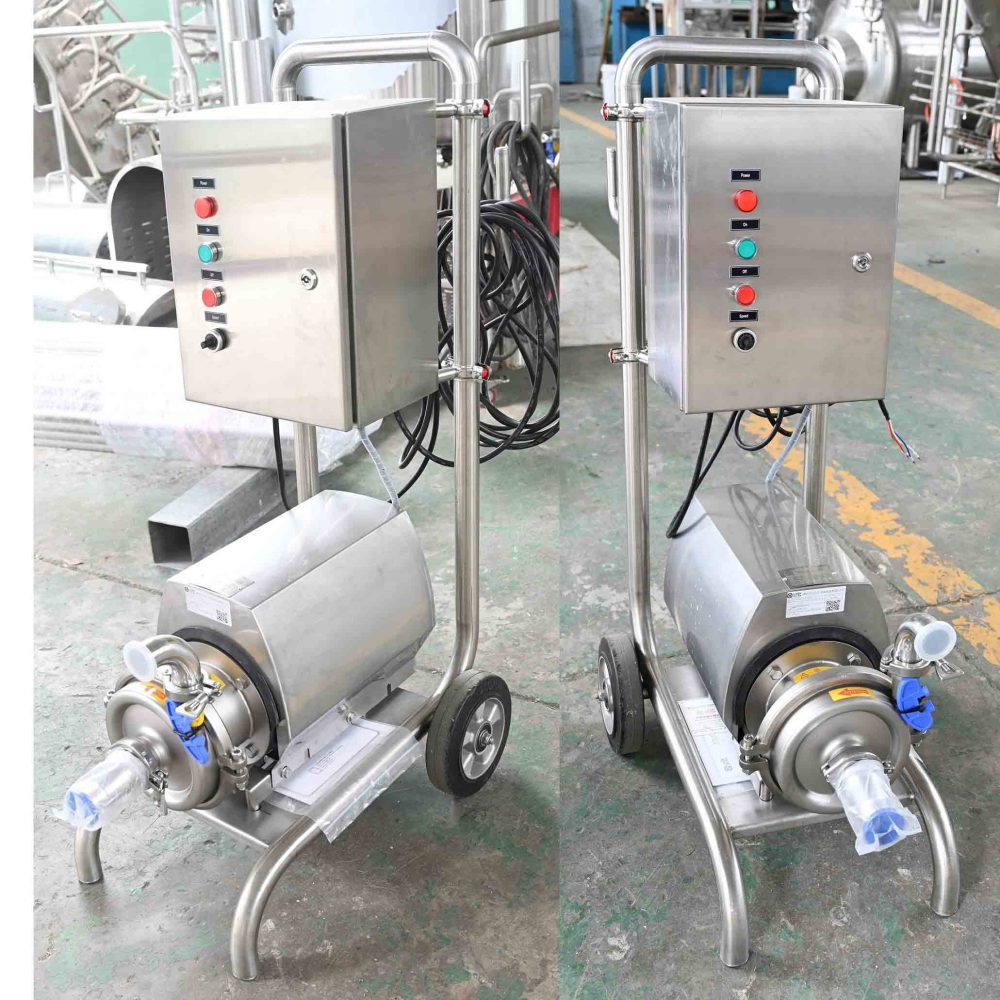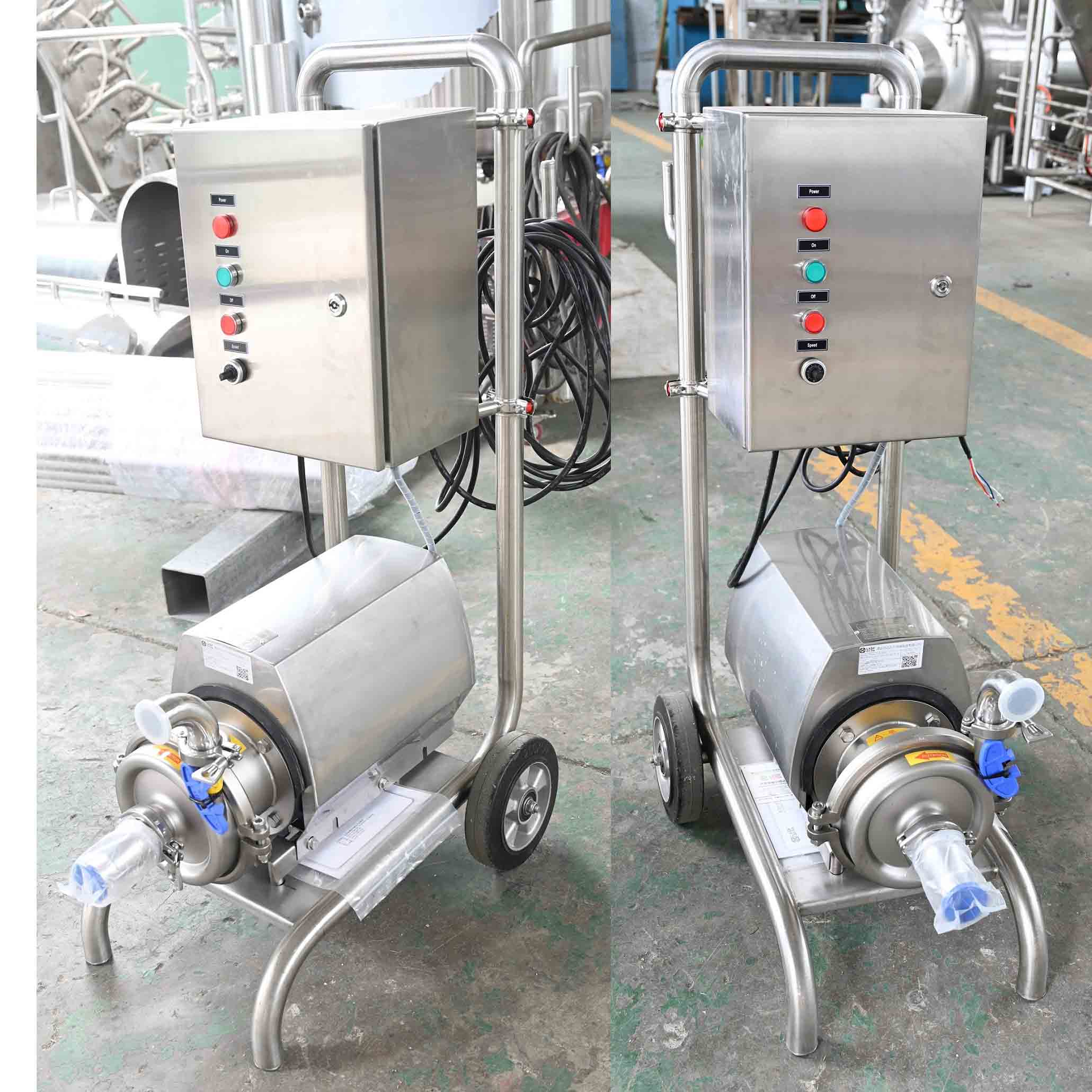
Advantages
NFE’s portable transfer pump is engineered with high-performance components to deliver professional-grade beer transfer for breweries of all sizes. The system integrates:
-
High-efficiency centrifugal pump for smooth, shear-free liquid handling
-
Danfoss variable frequency drive (VFD) for precise flow control (0-100% adjustable)
-
Industrial-grade control components with IP65 protection rating
-
Full 304 stainless steel construction (cart, fittings, and fluid path)
-
Heavy-duty casters with brake system (150kg load capacity per wheel)
Key Advantages for Breweries:
✔ Gentle product handling maintains beer quality and carbonation
✔ Mobile design enables flexible deployment between tanks/fermenters
✔ Corrosion-resistant for CIP/SIP cleaning compatibility
Available in multiple flow rate configurations (5-50HL/min) to match your production needs.
Parameter
 |
 |
A portable pump for brewing equipment can serve various essential purposes throughout the brewing process. Here are some key uses and benefits of using a portable pump in your brewing setup:
Liquid Transfer: One of the primary uses of a portable pump is transferring liquids such as wort, water, or cleaning solutions between vessels. This can save time and effort compared to manually lifting and pouring.
Recirculation and Whirlpooling: Pumps are often used for recirculating wort during mashing or boiling. Recirculation helps maintain consistent temperatures, promotes even extraction of sugars, and can enhance clarity. Whirlpooling the wort post-boil with a pump can aid in trub and hop separation.
Transferring to Fermenter: After boiling, a pump can help move the wort from the kettle to the fermenter, aerating the wort in the process. This promotes yeast health and fermentation.
Temperature Control: By recirculating heated or chilled water through a heat exchanger or immersion chiller, a pump can assist in rapidly cooling or heating your wort to achieve the desired pitching temperature.
Sparging and Vorlaufing: During the sparging process, a pump can be used to gently sparge the grains with hot water, helping extract sugars. Additionally, a pump can be used to vorlauf (recirculate) the first runnings of the mash to clarify the wort before transferring it to the kettle.
Racking and Bottling: When transferring beer from the fermenter to a bottling line or keg, a pump can be employed to minimize oxygen exposure and reduce splashing, which can help preserve the beer’s flavor and aroma.
Cleaning and Sanitizing: Pumps can be used to circulate cleaning and sanitizing solutions through your brewing equipment, ensuring thorough coverage and effective cleaning.
Counterflow Chilling: Portable pumps can assist in counterflow wort chilling, where hot wort is passed through a heat exchanger while cool water flows in the opposite direction. This rapidly cools down the wort before fermentation.
Aeration and Oxygenation: Oxygenating or aerating wort before fermentation is crucial for yeast health. A pump can help you achieve proper aeration levels by pumping air or oxygen into the wort.
Batch Sparge or Fly Sparge: In all-grain brewing, a pump can facilitate batch sparging or fly sparging by moving hot water through the grain bed to extract sugars and achieve the desired pre-boil volume.
Herms/Rims Systems: Pumps are essential for HERMS (Heat Exchange Recirculating Mash System) and RIMS (Recirculating Infusion Mash System) setups, where temperature control is maintained by recirculating the mash through a heat exchanger or heating element.
Extract Brewing: Even if you’re using extract brewing, a portable pump can assist in transferring liquids, sparging, and achieving efficient chilling.
Consistency and Reproducibility: Using a pump for various processes helps maintain consistency between batches and improves the repeatability of your brewing results.
Time Efficiency: A portable pump can significantly speed up your brewing process by automating tasks that would otherwise be manual, allowing you to multitask and focus on other aspects of brewing.
NFE’s portable pump:
Stainless steel 304, with frequency conversion, movable, motor with UL/CE certification, a vehicle with wheels, with control panel.
When choosing a portable pump, consider factors such as flow rate, head pressure, the type of liquid being transferred, the pump’s compatibility with the liquid, power source (electric, battery, manual), and the specific requirements of your intended application. Proper maintenance, cleaning, and adherence to safety guidelines are important to ensure the pump’s longevity and safe operation.




 Contact
Contact
 E-mail
E-mail
 Message
Message












